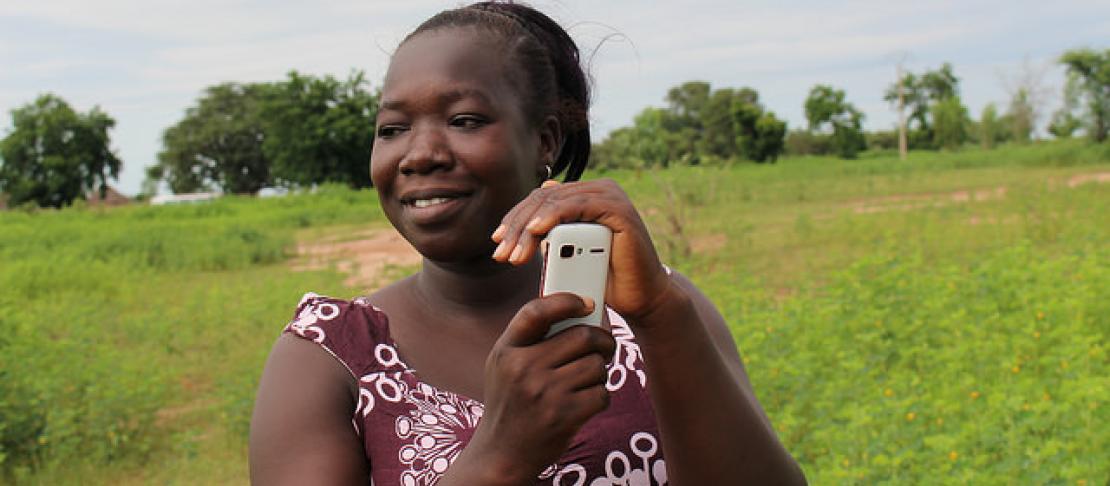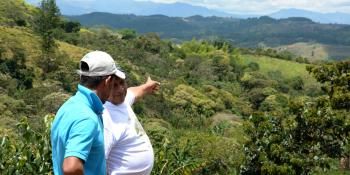Agricultural advisory services at a global scale

Agricultural advisories will be crucial for reaching half a billion farmers and achieving the SDGs by 2030. We outline five key issues around advisories that need to be addressed.
Is the global community serious about the SDGs? We would hope so, but do we comprehend the challenge ahead? In just over a decade—or to put it bluntly, in many cases only 11 growing seasons—we have to reach 500 million farmers, potentially expanding to 750 million by 2030. These farmers need advisories to help them adapt to climate variability, improve their farming operations and enhance their livelihood. These could be climate-informed seasonal advisories; in-season advisories; information about new stress-tolerant seeds and practices, climate smart agricultural technologies and practices, and market prices; or early warnings on pests and diseases, etc. The same advisory system could be linked to suppliers and buyers, and to credit and insurance.
But how to reach half a billion farmers? Development funds and national budgets are not going to do it, especially as we have seen a trend of rolling back extension to a point where there are many challenges. We suggest five key issues that need to be tackled:
Is the global community serious about the SDGs? Do we comprehend the challenge ahead?
1. Private sector involvement
We believe that the private sector will have to be an increasingly important player as a provider of agricultural advisories, with advisories being part and parcel of expanded farmer engagement in markets. This implies commercialised agriculture and much development of value chains.
2. Market-oriented and demand-driven advisories
For too long, extension services have been too top-down. How can advisories be better tailored to specific kinds of farmers and their natural and economic assets? Farmers need to receive the answers to the questions they have; ultimately one would want a Q&A system that works for a farm of less than one hectare. Agricultural extension advisories need to be market-oriented and demand-driven.
3. Digitised information
Reaching half a billion farmers in 10 years using old methods is impossible. In a decade each farmer needs to have access to a mobile phone. We envision a system where a farmer takes a photo of a problem crop, submits it to the Internet, and receives an instant answer that is relevant to her farm, to the inputs that she can access, and to the market conditions. In a local language. We have to have this vision if we are going to reach half a billion farmers. And we are sure that through big data analytics and decision support algorithms this can be achieved.
4. Data ownership
We would need a lot of good quality data to have truly context-specific and demand-driven advisories. Data ownership issues may be challenging. Some great examples have emerged, and one promising example is the case of Danish farmers owning their own data while sharing their data with other farmers through jointly owned advisory companies. In Southern Africa, the regional farmers’ organisation (SACAU) is helping its member organisations to register their farmers on a digital platform, getting them ready for tailored services.
5. Bundling
To reach scale, we need cost effectiveness. One route to this is bundling, where we reach scale across products to bring down the cost of each product. ECONET, for example, is experimenting with bundling advisories, agricultural insurance, burial insurance, farmer organisation membership and cell phone connectivity.
In just over a decade—or to put it bluntly, in many cases only 11 growing seasons—we have to reach 500 million farmers
How do we move forward? For us to have agricultural advisories on a global scale, perhaps the greatest limitation is the policy and institutional environment; and perhaps agricultural policy is less important than policies around connectivity and access to cell phones; creating an enabling environment for the private sector; massive renewable energy and road infrastructure development; and much more R&D on big data analytics and decision support algorithms.
If proper strategic frameworks and enabling environments are in place, there is an opportunity to transforming agricultural extension systems, thus making agriculture more productive and resilient. This can be achieved by moving away from an approach with centrally crafted, generic and blanket messaging—which often has limited impact—to a more inclusive, context-specific, market-oriented and demand-driven digital advisory involving public-private partnerships.
Digital climate-informed advisories are Pillar No. 1 of a transformed agriculture. Watch this space for Pillar No. 2, coming soon...
Bruce Campbell is the Program Director of the CGIAR Research Program on Climate Change, Agriculture and Food Security (CCAFS). Philip Thornton is the Leader of the CCAFS Flagship Program on Priorities and Policies for Climate-Smart Agriculture. Svend Christensen is the Head of the Department of Plant and Environmental Sciences at the University of Copenhagen. Ishmael Sunga is the Chief Executive Officer of the Southern African Confederation of Agricultural Unions (SACAU). Dawit Solomon is the CCAFS East Africa Regional Program Leader.



